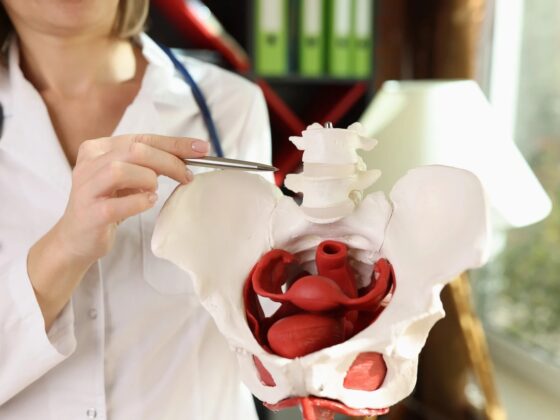Many people with low back pain (LBP) have asked this question and wondered if an MRI will help guide them down the right path to recovery. Up to 80% of us will experience some form of LBP at some point in our lives. The great news is that the majority of low back pain cases are not serious.
What should I do if I have a new onset of low back pain?
DON’T PANIC.
While you may have to temporarily refrain from more intense activities such as running or weightlifting, avoid complete bed rest and try to maintain gentle movement and activity within your tolerance.
Consult your healthcare provider.
Preferably, consult one who will manage your case conservatively first, like a physical therapist (PT). PTs are trained to do a thorough subjective interview, medical history intake and physical assessment to rule out red flags. From there they will either proceed with treatment or make the appropriate referral to a specialist.
Degenerative disc disease and bulging discs are common.
In 2015, researchers took MRIs of the low backs of over 3000 people who did not report back pain and found some interesting results- of the subjects in their 30s, 50% had “disc degeneration” and 40% had “disc bulges” although they were asymptomatic. The study noted that these percentages increase across decades of life. For example, 60% of people in their 50s had these findings, 70% of people in their 60s, and so on (Brinjikji, et al, 2015).
What we know is that LBP has multiple contributing factors that extend beyond structural changes alone. In the study mentioned above, we can conclude that the “disc degeneration” described should be considered a normal part of human aging- like “wrinkles on the inside.”
Treat the Human, Not the Image.
Scans have their place and they are also just one snapshot in time. They don’t always tell us the entire story of the person that stands before us. It’s been found that early & unnecessary imaging for LBP is expensive and actually leads to poorer patient outcomes (Jacobs, et al, 2020). Not to mention that the average cost of care when getting an MRI first is $6,664, compared to $1,871 when physical therapy is sought first (Fritz, et al 2015).

TLDR:
- MRIs have their place and are useful in detecting more serious conditions such as tumors, fractures, and infection.
- Other findings such as degenerative changes and bulging discs, although commonly seen, offer very little information on a person’s overall condition and correlate poorly with a person’s pain and function.
- Premature imaging of the lumbar spine in an episode of LBP is costly and in most cases, can do more harm than good.
- We never disregard someone’s MRI findings or their concerns, but instead place more emphasis on looking at the individual from a holistic perspective.
Struggling with lower back pain? Have some questions?
Written by Nick DiSarro, PT, DPT, OCS
Sources:
Fritz, J. M., Brennan, G. P., & Hunter, S. J. (2015). Physical therapy or advanced imaging as first management strategy following a new consultation for low back pain in primary care: associations with future health care utilization and charges. Health services research, 50(6), 1927-1940.
Brinjikji, W., Luetmer, P. H., Comstock, B., Bresnahan, B. W., Chen, L. E., Deyo, R. A., … & Wald, J. T. (2015). Systematic literature review of imaging features of spinal degeneration in asymptomatic populations. American Journal of Neuroradiology, 36(4), 811-816.
Jacobs, J. C., Jarvik, J. G., Chou, R., Boothroyd, D., Lo, J., Nevedal, A., & Barnett, P. G. (2020). Observational Study of the Downstream Consequences of Inappropriate MRI of the Lumbar Spine. Journal of general internal medicine, 35(12), 3605-3612.
Disclaimer:
The content in this post is intended for educational purposes only. No information in this post is to be taken as medical or health advice. See a healthcare professional if you have any questions about your individual needs




